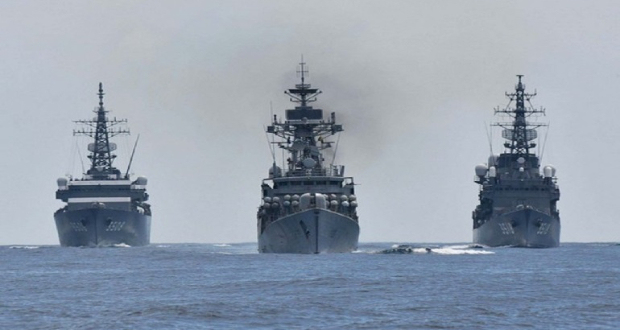In the context of maritime affairs, for instance, this would mean whether a country considers itself to be a maritime nation. Naval prowess does not necessarily translate to having such an identity; instead, it is forged by a nation’s dependence on the sea and the value it attaches to the oceans. In recent years, India has cultivated a ‘maritime mindset’, prioritising its oceanic neighbourhood to secure national interests. Indeed, India’s ‘maritime identity’ is evident in the reference to Mahan’s works in the bibliography of the Indian Navy’s 2015 strategy document titled ‘Ensuring Secure Seas: Indian Maritime Security Strategy’. At the core of India’s evolving maritime foreign policy is its dependence on the Indian Ocean for trade, security, and foreign policy aspirations, especially in the context of a rising Indo-Pacific.
The Indo-Pacific conceptually embodies the expanse and confluence of the Indian and Pacific Oceans, spanning from “the eastern shores of Africa to the western shores of America”. The Bay of Bengal and the adjoining Andaman Sea are at the heart of this geopolitical construct, forming the northeastern offshoot of the Indian Ocean as it merges with the Pacific Ocean. For the Indo-Pacific to prosper as a coherent whole, it is crucial for the smaller regions that are a part of it, such as the Bay of Bengal region, to develop. Geographically, the Bay is a bridge between South and Southeast Asia, making multidimensional maritime cooperation necessary between the countries of both blocs for regional growth.
The Bay of Bengal and the Andaman Sea have strong economic potential. The countries outlining the Bay (India, Bangladesh, Myanmar, Sri Lanka, and Thailand) have experienced exponential economic growth over the last decade, with the South Asian states witnessing the world’s fastest growth of an average of 7.3 percent per annum. Several shipping routes pass through the Bay, carrying resources such as oil from West Asian countries to South and Southeast Asia. The Bay sits at a strategic halfway point along the East-West shipping lane as it enters the Malacca Strait, connecting North America and Western Europe with Asia. It is also home to almost 40 percent of the world’s hydrocarbon reserves, including 324 billion tonnes of coal, 664 million tonnes of oil, 99 trillion cubic feet of natural gas, and 11 billion tonnes of biomass and potential (328 GW of hydropower (large) and over 1000 GW of renewable energy). India has a substantial share of hydrocarbons in the Bay, with the latest discovery made in January 2024. Two significant reserves of natural gas were found in the Mahanadi basin deepwater block in the Bay as the country tries to shift from a reliance on coal to natural gas through, for instance, high-risk deep-water exploration.
The Bay also hosts a wealth of marine living resources, accounting for six million tonnes of fish a year, or nearly 4 percent of the value of the global catch. The fishing industry is a significant source of food and livelihood in the region, feeding almost 400 million, employing 460,000 fishing trawlers, and offering livelihood options to nearly 4.5 million people. As such, the Bay of Bengal is a vital part of the littoral countries’ blue economies, but the space remains underutilised due to inadequate infrastructure and collaborative initiatives.




